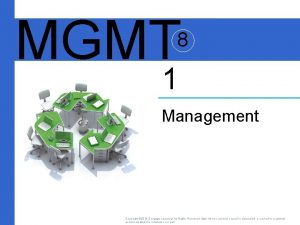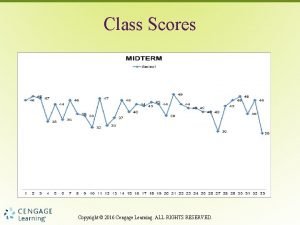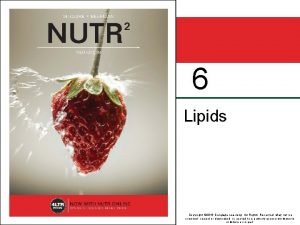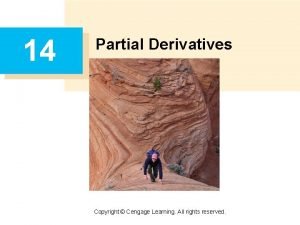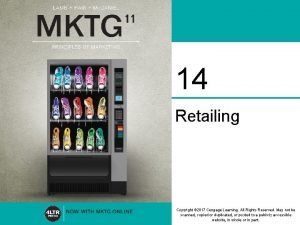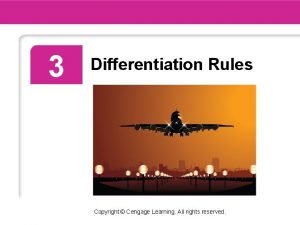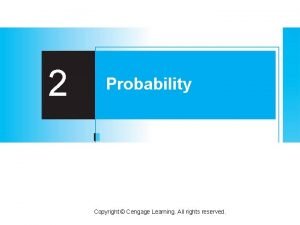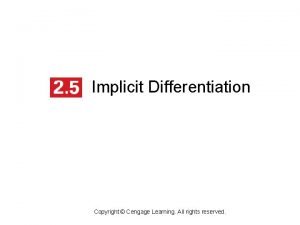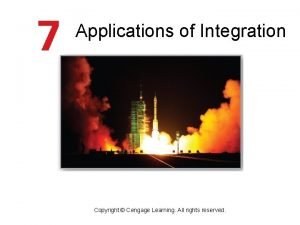16 Control Copyright 2016 Cengage Learning All Rights



















- Slides: 19

16 Control Copyright © 2016 Cengage Learning. All Rights Reserved. May not be scanned, copied or duplicated, or posted to a publicly accessible website, in whole or in part.

LEARNING OUTCOMES 1 Describe the basic control process 2 Discuss the various methods that managers can use to maintain control 3 Describe the behaviors, processes, and outcomes that today’s managers are choosing to control in their organizations Copyright © 2016 Cengage Learning. All Rights Reserved. May not be scanned, copied or duplicated, or posted to a publicly accessible website, in whole or in part. MGMT 8 | CH 3 2

Control Process • Standards • Basic control process begins with the establishment of clear standards of performance • Good standard enables goal achievement • Companies determine standards by: • Listening to customers’ comments, complaints, and suggestions • Benchmarking: Identifying outstanding practices, processes, and standards in other companies and adapting them Copyright © 2016 Cengage Learning. All Rights Reserved. May not be scanned, copied or duplicated, or posted to a publicly accessible website, in whole or in part. MGMT 8 | CH 3 3

Control Process • Corrective action • Involves identifying performance deviations • Analyze those deviations, and develop and implement programs to correct them • Dynamic, cybernetic process • Cybernetic: Process of steering or keeping on course • Entire process is repeated again in an endless feedback loop to maintain performance levels Copyright © 2016 Cengage Learning. All Rights Reserved. May not be scanned, copied or duplicated, or posted to a publicly accessible website, in whole or in part. MGMT 8 | CH 3 4

Exhibit 16. 1 Cybernetic Control Process Source: Reprinted from Business Horizons, June 1972, H. Koontz and R. W. Bradspies, “Managing through Feedforward Control: A Future Directed View, ” pp. 25– 36, Copyright © 1972, with permission from Elsevier. Copyright © 2016 Cengage Learning. All Rights Reserved. May not be scanned, copied or duplicated, or posted to a publicly accessible website, in whole or in part. MGMT 8 | CH 3 5

Control Process Feedback control • Gathers information about performance deficiencies after they occur • Used to correct or prevent performance deficiencies Concurrent control • Gathers information about performance deficiencies as they occur • Eliminates the delay between performance and feedback about the performance Feedforward control • Gathers information about performance deficiencies before they occur • Seeks to prevent or minimize performance deficiencies before they happen Copyright © 2016 Cengage Learning. All Rights Reserved. May not be scanned, copied or duplicated, or posted to a publicly accessible website, in whole or in part. MGMT 8 | CH 3 6

Control Process • Control isn’t always worthwhile or possible • Control loss: Occurs when behavior and work procedures do not conform to standards • Careful assessment of regulation costs determine whether control is worthwhile • Cybernetic feasibility: Extent to which it is possible to implement each step in the control process Copyright © 2016 Cengage Learning. All Rights Reserved. May not be scanned, copied or duplicated, or posted to a publicly accessible website, in whole or in part. MGMT 8 | CH 3 7

Control Methods Bureaucratic control Objective control Concertive control Normative control Self-control (self management) Copyright © 2016 Cengage Learning. All Rights Reserved. May not be scanned, copied or duplicated, or posted to a publicly accessible website, in whole or in part. MGMT 8 | CH 3 8

Factors to Control • Successful companies find a balance that comes from doing three or four things right • • Balanced scorecard approach to control Budgets, cash flows, and economic value added Customer defections Waste and pollution Copyright © 2016 Cengage Learning. All Rights Reserved. May not be scanned, copied or duplicated, or posted to a publicly accessible website, in whole or in part. MGMT 8 | CH 3 9

Balanced Scorecard • Measurement of organizational performance in finances, customers, internal operations, innovation, and learning • Forces managers to set specific goals and measure performance • Minimizes the chances of suboptimization • Suboptimization: Performance improvement in one part of an organization at the expense of decreased performance in another part Copyright © 2016 Cengage Learning. All Rights Reserved. May not be scanned, copied or duplicated, or posted to a publicly accessible website, in whole or in part. MGMT 8 | CH 3 10

Financial and Customer Perspective • Controlling financial performance focuses on accounting tools • Cash flow analysis, balance sheets, income statements, financial ratios, and budgets • Economic value added (EVA): Amount by which company profits exceed the cost of capital in a given year Copyright © 2016 Cengage Learning. All Rights Reserved. May not be scanned, copied or duplicated, or posted to a publicly accessible website, in whole or in part. MGMT 8 | CH 3 11

Financial and Customer Perspective • Controlling customer defections have a great effect on profits • Customer defection: Performance in which companies identify which customers are likely to leave and measure the rate at which they are leaving Copyright © 2016 Cengage Learning. All Rights Reserved. May not be scanned, copied or duplicated, or posted to a publicly accessible website, in whole or in part. MGMT 8 | CH 3 12

Internal Perspective • Quality is defined and measured in three ways • Excellence, value, and conformance to expectations • Way in which a company defines quality affects methods and measures that workers use to control quality Copyright © 2016 Cengage Learning. All Rights Reserved. May not be scanned, copied or duplicated, or posted to a publicly accessible website, in whole or in part. MGMT 8 | CH 3 13

Exhibit 16. 5 Advantages and Disadvantages of Different Measures of Quality Copyright © 2016 Cengage Learning. All Rights Reserved. May not be scanned, copied or duplicated, or posted to a publicly accessible website, in whole or in part. MGMT 8 | CH 3 14

Innovation and Learning Perspective • Involves controlling waste and pollution • Strategies for waste prevention and reduction • Good housekeeping • Material/product substitution • Process modification Copyright © 2016 Cengage Learning. All Rights Reserved. May not be scanned, copied or duplicated, or posted to a publicly accessible website, in whole or in part. MGMT 8 | CH 3 15

SUMMARY • Control is a regulatory process of establishing standards to achieve goals, comparing actual performance against the standards, and taking corrective action • Balanced scorecard encourages managers to look beyond traditional financial measures • Traditional approach to controlling financial performance focuses on accounting tools Copyright © 2016 Cengage Learning. All Rights Reserved. May not be scanned, copied or duplicated, or posted to a publicly accessible website, in whole or in part. MGMT 8 | CH 3 16

KEY TERMS • • • Control Standards Benchmarking Cybernetic Feedback control Concurrent control Feedforward control Control loss Regulation costs Cybernetic feasibility Bureaucratic control Objective control Behavior control Output control Normative control Concertive control Self-control (selfmanagement) • Balanced scorecard • Suboptimization • • Copyright © 2016 Cengage Learning. All Rights Reserved. May not be scanned, copied or duplicated, or posted to a publicly accessible website, in whole or in part. MGMT 8 | CH 3 17

KEY TERMS Cash flow analysis Balance sheets Income statements Financial ratios Budgets Economic value added (EVA) • Customer defections • Value • • • Copyright © 2016 Cengage Learning. All Rights Reserved. May not be scanned, copied or duplicated, or posted to a publicly accessible website, in whole or in part. MGMT 8 | CH 3 18

Copyright © 2016 Cengage Learning. All Rights Reserved. May not be scanned, copied or duplicated, or posted to a publicly accessible website, in whole or in part. MGMT 8 | CH 3 19
 2016 cengage learning
2016 cengage learning Copyright cengage learning. powered by cognero
Copyright cengage learning. powered by cognero Copyright 2015 all rights reserved
Copyright 2015 all rights reserved Copyright 2015 all rights reserved
Copyright 2015 all rights reserved Dell all rights reserved copyright 2009
Dell all rights reserved copyright 2009 Copyright © 2018 all rights reserved
Copyright © 2018 all rights reserved Chapter 6:2 interpreting word parts
Chapter 6:2 interpreting word parts Chapter 5 the cardiovascular system labeling exercises
Chapter 5 the cardiovascular system labeling exercises Cengage learning heart diagram
Cengage learning heart diagram South-western cengage learning
South-western cengage learning 2009 delmar cengage learning
2009 delmar cengage learning 2009 delmar cengage learning
2009 delmar cengage learning Cengage learning heart diagram
Cengage learning heart diagram Chapter 1 matching medical terminology
Chapter 1 matching medical terminology Cengage learning australia
Cengage learning australia 2009 delmar cengage learning
2009 delmar cengage learning Whille
Whille Cengage learning
Cengage learning Wadsworth cengage learning
Wadsworth cengage learning Cengage learning
Cengage learning
